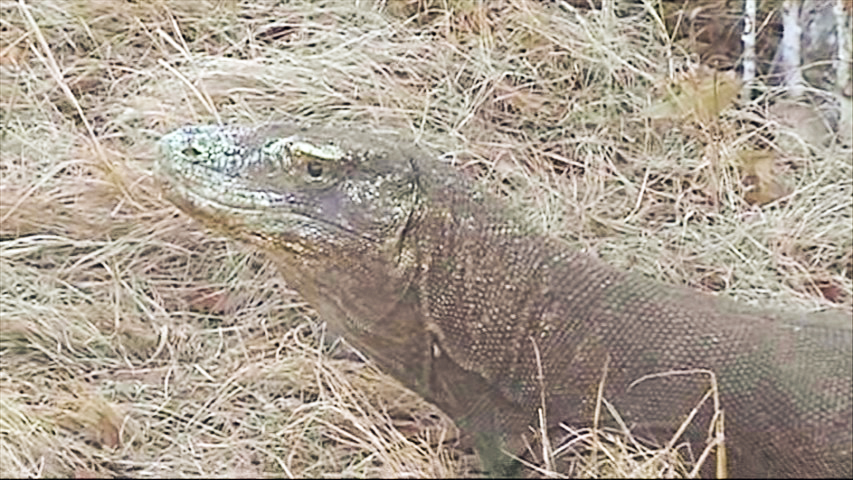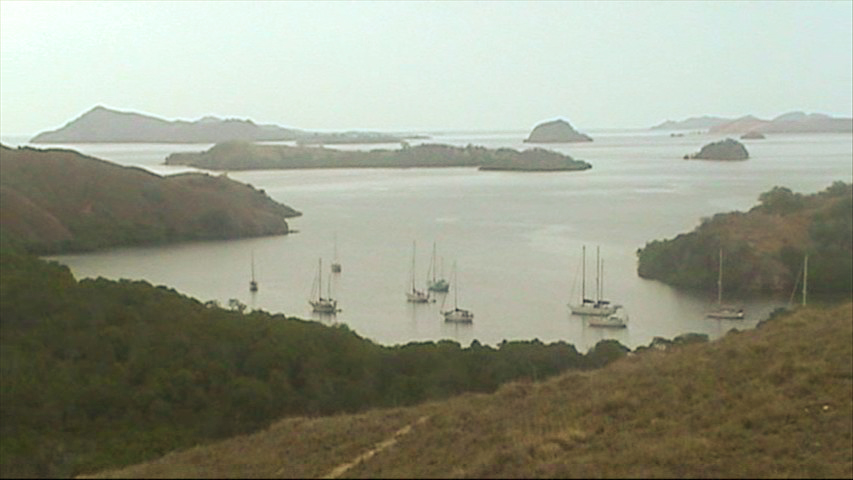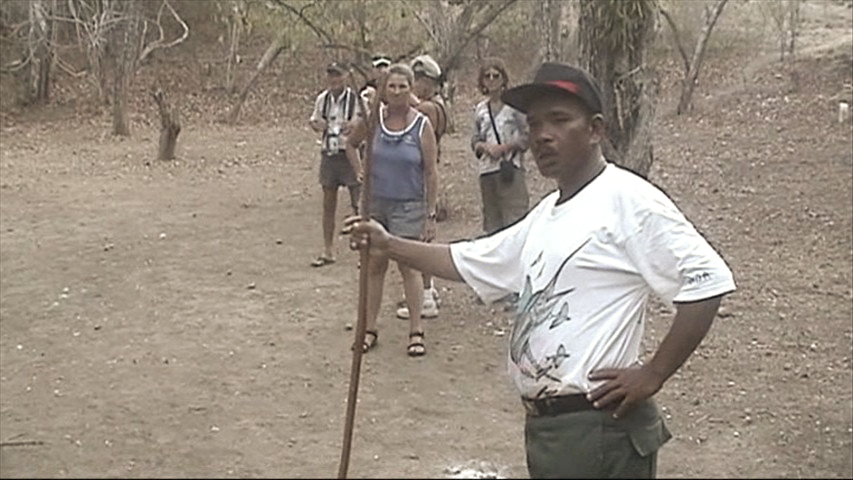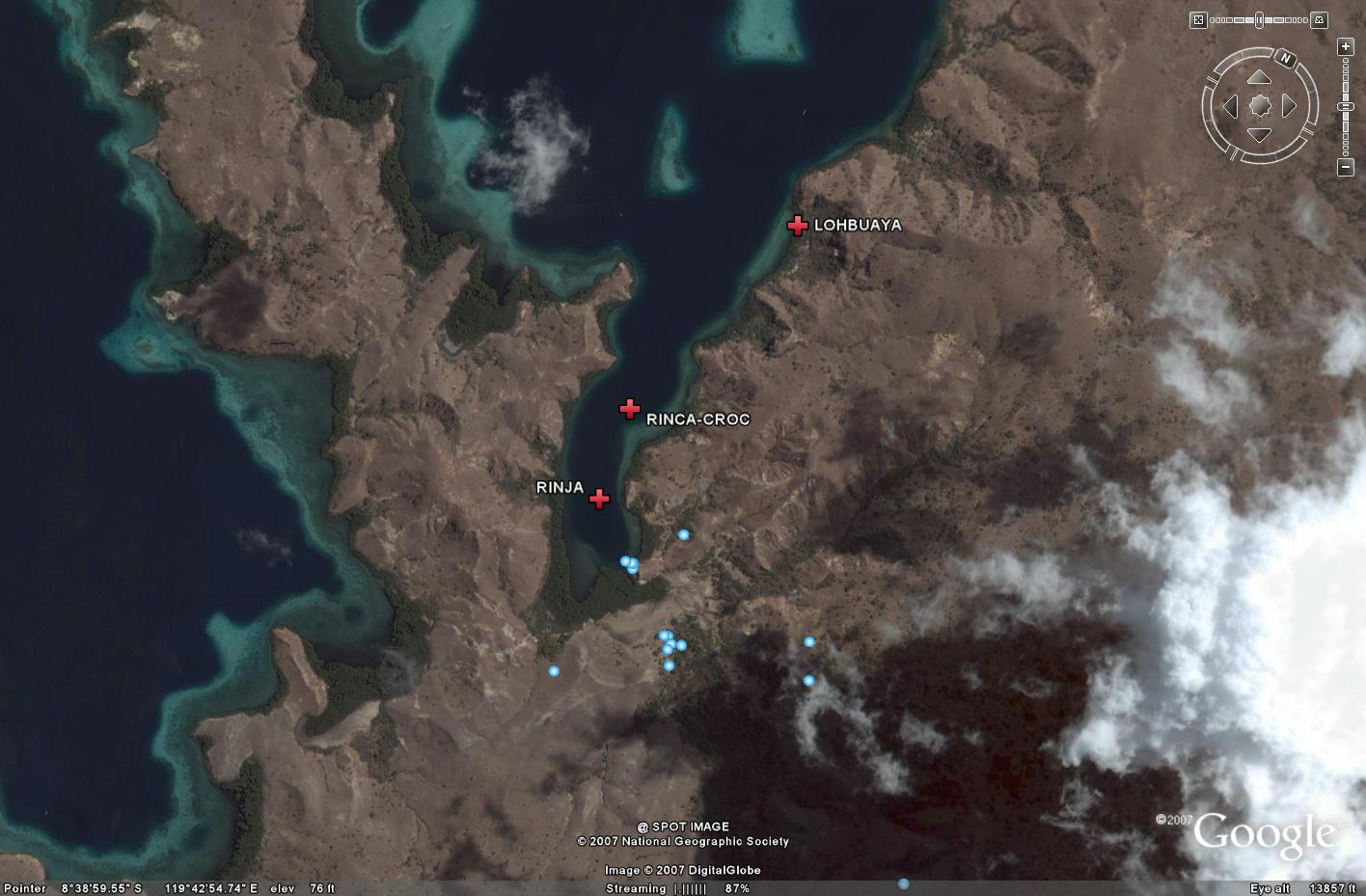|
Rinca Island,
Komodos Group
August 26 - September 1, 2007
Bonus!!! Here's a link to a video we shot while
on the island ...

(Steph) Three islands make up the official Komodo National Park, one of which
is Rinca. We had been told that Rinca was the island with the best opportunity
to see Komodo dragons, and were recommended a tour led by the park officers.
Locals on Flores had also recommended Rinca, because the dragons on Komodo are
"lazy." I guess we liked the idea of a non-lazy dragon or two, although after
seeing the size of these things, lazy may not be so bad!
We timed our departure from Bajo with the currents that had reportedly been
wreaking havoc on the boats ahead of us. We heard stories about boats getting
spun 180 degrees in eddies, and having to drop anchor in the middle of a channel
to avoid getting swept backwards while a 10-knot counter current finished its
run. Warren figured out the currents pretty well, so we had no trouble catching
a favorable current when we needed it, or making a transit at slack. We made it
to Rinca by the early afternoon and were able to join some friends for a sunset
tour of the island.

With a few hours to spare before sunset, we decided to head to shore and
wander around a bit on our own. We read somewhere that a grumpy old dragon hangs
out at the dinghy dock, but we didn't see her as we tied up. We wandered along a
path that led to the few wooden buildings that house the park officers. Behind
the buildings, we spotted a troupe of macaque monkeys. Captivated by the
monkeys, we didn't at first notice the 10-foot-long Komodo dragon that was
languidly walking through the camp. Warren saw it out of the corner of his eye,
and we both stopped cold. The animal was HUGE. We then noticed about three or
four other dragons lying around in the dust. I decided then and there I wasn't
going to walk any further onto the island without a guide.
We high-tailed it back to the dinghy where we then saw the legendary dock
dragon. We had walked right by her the first time, as she blended in with the
dust and rocks around her so well. One of these dragons could just reach out and
grab us anytime it wanted a snack, and we wouldn't even see it coming.

Later in the afternoon we went back on shore with a group of six other
people. Safety in numbers, right? They had been on a dragon tour earlier that
day, so they were looking for some of the other animals that call the Komodo
islands their home. We spent a few hours bushwhacking along game trails with our
guide Uncle Louie looking for Timor deer, wild pigs and horses, water buffalo,
megapod birds and monkeys. There were some beautiful panoramic views of the
Komodo islands group, and we even saw a Komodo dragon or two.
The next morning, we went on the highly recommended morning tour. The dragons
are most active in the morning before the hottest part of the day. We saw a
Komodo dragon guarding her nest of eggs from other dragons who might dig them up
and eat them. At one point, she had to chase off another dragon who spent a few
minutes trying to claw her with his enormous ... well, claws. But she
successfully sent him on his way. We saw small, adolescent dragons and big,
ready-for-retirement dragons. We saw one who appeared to be half asleep, but as
soon as a wild dog went running by a few hundred yards away, he was up and off
in pursuit, tongue slithering and leading the way. We also saw the stripped
carcass of a water buffalo that had been killed just a few days before.
Actually, the wheels in motion for his death had been going for a week or so --
the dragons kill their big prey by biting them once. The bite eventually becomes
infected, killing its victim. It's then that the dragons descend to feed on the
carcass until only bones remain. We had missed the last of the meaty bits by one
day. I don't know if we regretted that very much.
(Wojo) Sometimes you really feel as though you've finally arrived somewhere.
Dropping the hook, taking your dinghy in and seeing a Komodo dragon was one of
these moments for me.

Google Earth overhead shot of the bolt hole
anchorage in Rinca Park
The currents in the Komodo islands really lived up to the hype. 10 knot
currents and whirlpools are not unheard of on Spring tides. However, if you pay
attention to the tides and have a copy of a current atlas like the one found in
_SE Asia Cruising Guide_ you should be fine. One thing to keep in mind is that
all the current calculations are based on the upper and lower transit of the
moon. This should not be confused with moonrise and moonset. UT and LT of the
moon are akin to taking a meridian passage sight of the sun at local-apparanent-noon
except that instead of the sun crossing your meridian its the moon. I used David
Burch's StarPath hand calculator to find UT and LT and it was extremely accurate
in the straits!
|











